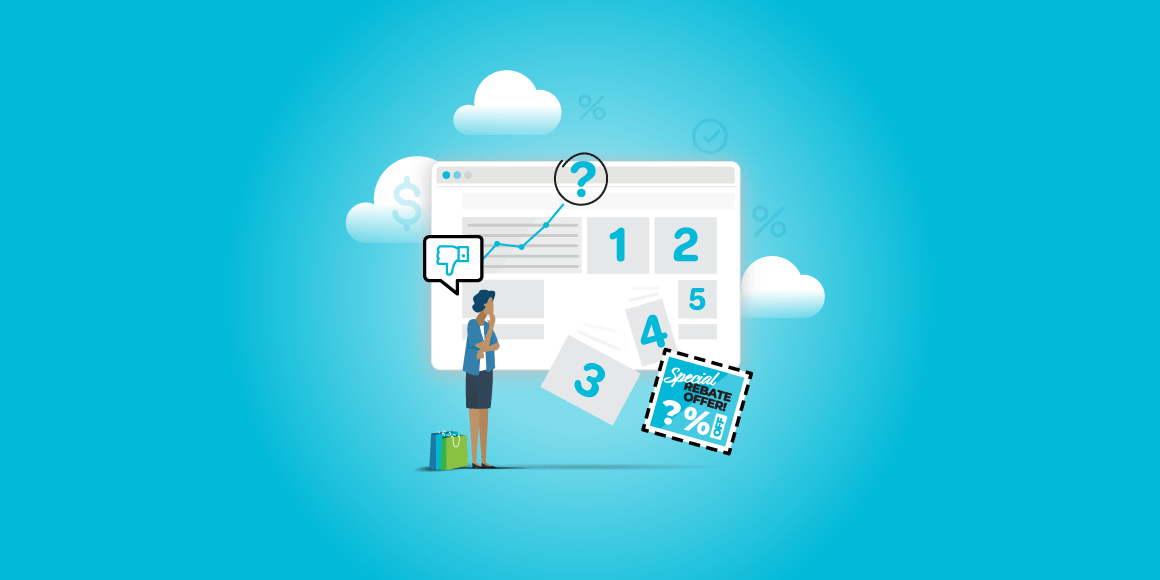Here's the problem, many channel incentives programs unintentionally create an adversarial relationship between the brand and retailer who truly need each other to succeed. Take for example instant rebates, a brand offers a discount to consumers with the goal of helping retailers close sales on their showroom floor. On the surface a win/win for retailers and consumers.
What on the surface looks like a win/win isn’t always seen this way by retailers. Retailers have two big issues with instant rebates. First, the retailer takes a cash flow hit and is out of pocket until they get paid back by the manufacturer or distributor. Second, in many segments the manufacturer typically only pays 70% to 80% of the rebate to the retailers, and even then, on an extended payment cycle. Brands also often create bundling requirements that don’t match consumer needs.
So, on one hand we’ve got an incentive that consumers like and that drives the right behaviors, and on the other hand, we have friction in the channel. How do we make instant rebates a win/win/win for consumers, retailers and manufacturers?
Here are a few tips we’ve learned from working with major brands:
Create a Quick, Consistent Payment Cycle.
Change the way claims get entered, processed and paid and you will benefit from the simple principle of behavioral economics. Encourage retailers to enter claims more often, and in return offer to pay more frequently. You’ll be rewarded with more engagement with the brand, which makes your brand top of mind with retailers, which in turn drives more sales.
More frequent claim entry and payment results in a happier channel. It also has a hidden benefit of creating more visibility into the performance metrics of your instant rebate program. Watch how it's working and where it's working and make little tweaks as you go.
Improve the Retailer & Consumer Experience.
Consumers don’t want to get slowed down at the register and/or deal with complicated programs. Keep rebate offers simple and make sure they align with consumer needs. A good example of this are new homeowners who frequently need refrigerators but don’t need dishwashers. Rebates requiring the purchase of both don’t work for anyone buying a new home from the major US homebuilders (Pulte, DR Horton, Lennar, KB, etc.). These home buyers frequently need both refrigerators and washers/dryers. This would be a better bundle.
Retailers don't want to burn human resources entering claims more often, but they do want to get paid more frequently. Design your program to make claim entry as simple as possible. Then, re-examine it and simplify again. Offer them simple ways to enter claims via the Internet, either on a per-transaction basis or via the uploading of an export from their POS system; whichever is easiest for them.
Create Visibility.
Just as you benefit from having real-time reporting into your rebate campaign’s performance, you also benefit from providing real-time claim payment data to your retailers. Retailers want to know you’ve received their claims, estimated payment dates, and confirmation of payment issuance. Making this information easier to find reduces time-drain on them and you and improves retailer engagement and satisfaction.
Pay More Frequently.
We say this about all incentive programs simply because it's equally true for all programs. You are trying to change retailer behavior you need to show the way by changing brand behavior. If the brand pays the sales incentives out quickly, retailers fund the cash for less time and are happier with the program.
Here's the big idea: get retailers to submit claims more frequently by simplifying claim entry and offering to pay more frequently. This eliminates the friction in the channel and everyone engages with the program and wins.
%20copy%204.png)





